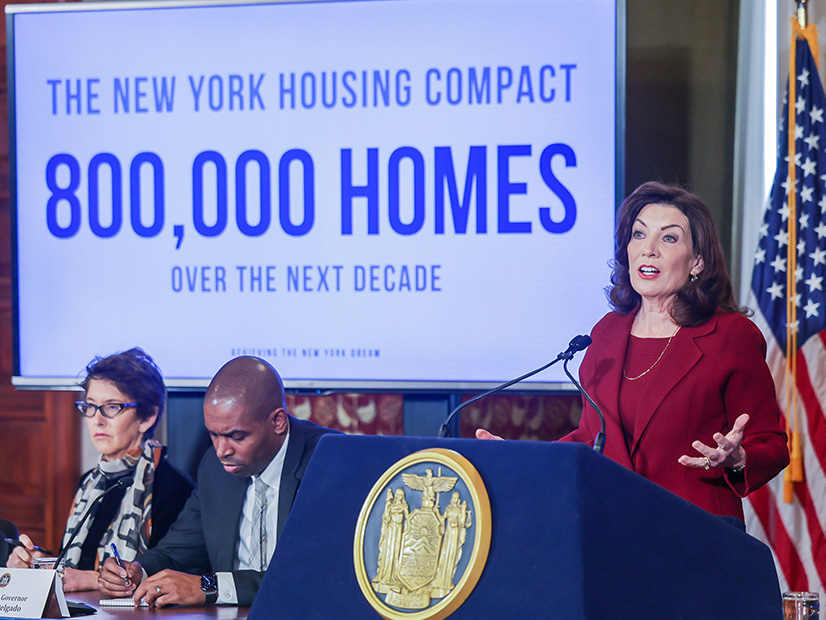
New York Gov. Kathy Hochul on Wednesday released a legislative framework for the cap-and-invest program she is proposing to help the state meet its greenhouse gas-reduction goals.
Money gained from auctions of emission allowances would go into a climate action fund, at least 30% of which would be set aside for consumers and up to 3% for industrial small businesses that face increased costs from the program.
The remainder of the fund, minus operating expenses, would be used by the New York State Energy Research and Development Authority (NYSERDA) to help pay for the clean energy transition codified in the state’s Climate Leadership and Community Protection Act (CLCPA).
An economywide cap-and-invest program was one of the recommendations in the final Scoping Plan of the CLCPA, issued in December, and Hochul announced her plans for one in her State of the State address in January. (See Hochul Highlights Cap and Invest in State of the State Address.)
Hochul indicated that the Department of Environmental Conservation (DEC) would write the program regulations in consultation with NYSERDA. But she needs the State Legislature to amend state Environmental Conservation Law, Public Authorities Law and Finance Law to enable certain aspects of it.
The governor included the measure in the $227 billion executive budget proposal for fiscal year 2024 that she released Wednesday because creating the program would require spending $6.5 million and 10 full-time-equivalent employees.
Among the provisions of Hochul’s proposal:
- DEC would promulgate regulations by Jan. 1, 2024.
- DEC would prioritize affordability as it designs the program and design it to be able to link with similar programs in other states.
- The program would ease clean-energy transition costs for consumers and make New York a better, more livable state.
- It would prioritize disadvantaged communities and be designed to ensure proceeds of the allowances are invested in such communities and to avoid disproportionate burdens on them.
- At least six regional public hearings would be held on the draft criteria for the program and on the draft list of disadvantaged communities.
- Energy-intensive and trade-exposed facilities — those that use a lot of energy and are at competitive risk if that energy costs more in New York than in other states — would receive a no-cost allocation of allowances; DEC would determine what facilities qualify and how to allocate those allowances.
The Scoping Plan flagged the risk of “leakage”: an industrial operation that faces high costs in New York shifting production to states with looser rules. Leakage is doubly bad, the plan’s authors wrote, because not only is that operation still contributing to global warming, it is also economically harming New York by moving payroll and tax payments out of state.
The program would set a cap on greenhouse gas emissions, establish allowances for a percentage of those emissions, and shrink the percentage each year as the state moves to reduce emissions 40% from 1990 levels by 2030 and 85% by 2050.
